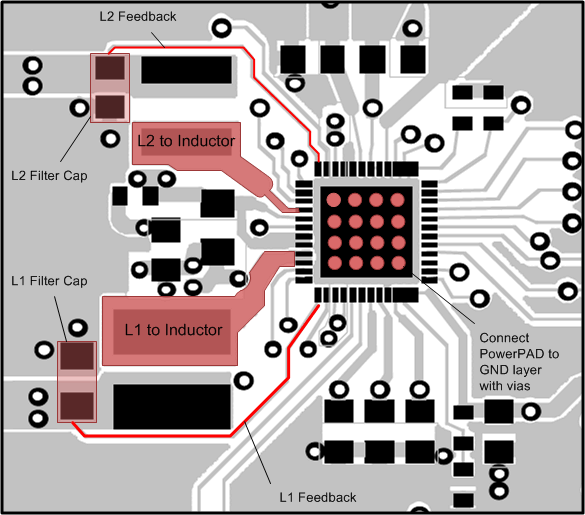SLVS551A December 2004 – September 2015 TPS65014
PRODUCTION DATA.
- 1 Features
- 2 Applications
- 3 Description
- 4 Revision History
- 5 Pin Configuration and Functions
-
6 Specifications
- 6.1 Absolute Maximum Ratings
- 6.2 ESD Ratings
- 6.3 Recommended Operating Conditions
- 6.4 Thermal Information
- 6.5 Electrical Characteristics
- 6.6 Electrical Characteristics: Battery Charger
- 6.7 Dissipation Ratings
- 6.8 Serial Interface Timing Requirements
- 6.9 Switching Characteristics
- 6.10 Typical Characteristics
-
7 Detailed Description
- 7.1 Overview
- 7.2 Functional Block Diagram
- 7.3 Feature Description
- 7.4 Device Functional Modes
- 7.5
Register Maps
- 7.5.1 CHGSTATUS Register (offset = 01h) (reset: 00h)
- 7.5.2 REGSTATUS Register (offset = 02h) (reset: 00h)
- 7.5.3 MASK1 Register (offset = 03h) (reset: FFh)
- 7.5.4 MASK2 Register (offset = 04h) (reset: FFh)
- 7.5.5 ACKINT1 Register (offset = 05h) (reset: 00h)
- 7.5.6 ACKINT2 Register (offset: 06h) (reset: 00h)
- 7.5.7 CHGCONFIG Register (offset: 07h) (reset: 1Bh)
- 7.5.8 LED1_ON Register (offset: 08h) (reset: 00h)
- 7.5.9 LED1_PER Register (offset: 09h) (reset: 00h)
- 7.5.10 LED2_ON Register (offset: 0Ah) (reset: 00h)
- 7.5.11 LED2_PER (offset: 0Bh) (reset: 00h)
- 7.5.12 VDCDC1 Register (offset: 0Ch) (reset: 32h/33h)
- 7.5.13 VDCDC2 Register (offset: 0Dh) (reset: 60h/70h)
- 7.5.14 VREGS1 Register (offset: 0Eh) (reset: 88h)
- 7.5.15 MASK3 Register (offset: 0Fh) (reset: 00h)
- 7.5.16 DEFGPIO Register (offset = 10h) (reset: 00h)
- 8 Application and Implementation
- 9 Power Supply Recommendations
- 10Layout
- 11Device and Documentation Support
- 12Mechanical, Packaging, and Orderable Information
10 Layout
10.1 Layout Guidelines
- The input capacitors for the DC-DC converters must be placed as close as possible to the VINMAIN, VINCORE, and VCC pins.
- The inductor of the output filter must be placed as close as possible to the device to provide the shortest switch node possible, thus reducing the noise emitted into the system and increasing the efficiency.
- Sense the feedback voltage from the output at the output capacitors to ensure the best DC accuracy. Feedback must be routed away from noisy sources such as the inductor. If possible, route on the opposite side from the switch node and inductor, and place a GND plane between the feedback and the noisy sources or keepout underneath them entirely.
- Place the output capacitors as close as possible to the inductor to reduce the feedback loop. This ensures best regulation at the feedback point.
- Place the device as close as possible to the most demanding or sensitive load. The output capacitors must be placed close to the input of the load, which ensures the best AC performance possible.
- The input and output capacitors for the LDOs must be placed close to the device for best regulation performance.
- Use vias to connect the thermal pad to the ground plane.
- TI recommends using the common ground plane for the layout of this device. The AGND can be separated from the PGND, but a large low-parasitic PGND is required to connect the PGNDx pins to the CIN and external PGND connections. If the AGND and PGND planes are separated, have one connection point to reference the grounds together. Place this connection point close to the IC.
10.2 Layout Example
 Figure 61. Layout Recommendation
Figure 61. Layout Recommendation